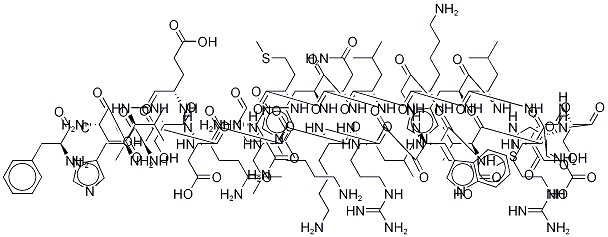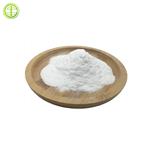Application in Particular Diseases
In Osteoporosis:
- Teriparatide is a recombinant product representing the first 34 amino acids in human parathyroid hormone. Teriparatide increases bone formation, the bone remodeling rate, and osteoblast number and activity. Both bone mass and architecture are improved.
- Teriparatide is FDA approved for postmenopausal women and men who are at high risk for fracture. Candidates for therapy include patients with a history of osteoporotic fracture, multiple risk factors for fracture, very low bone density (e.g., T-score <–3.5), or those who have failed or are intolerant of previous bisphosphonate therapy.
- The drug reduces fracture risk in postmenopausal women, but no fracture data are available in men. Lumbar spine BMD increases are higher than with any other osteoporosis therapy. Although wrist BMD is decreased, wrist fractures are not increased.
- Discontinuation of therapy results in a decrease in BMD, but some antifracture efficacy appears to be maintained. Sequential therapy with teriparatide followed by an antiresorptive agent (e.g., bisphosphonate) should be considered to maintain BMD gains.
- The dose is 20 mcg administered subcutaneously in the thigh or abdominal area (see Table 3-4). The initial dose should be given with the patient either lying or sitting, in case orthostatic hypotension occurs. Each prefilled 3-mL pen device delivers a 20-mcg dose each day for up to 28 days; the pen device should be kept refrigerated.
- Transient hypercalcemia rarely occurs. A trough serum calcium concentration is recommended 1 month after initiation of therapy.
- Teriparatide is contraindicated in patients at baseline increased risk for osteosarcoma (e.g., Paget’s bone disease, unexplained alkaline phosphatase elevations, pediatric patients, young adults with open epiphyses, or patients with prior radiation therapy involving the skeleton).
Description
The anabolic drug teriparatide acetate (TA), known as recombinant human parathyroid hormone 1–34, which directly promotes bone formation by generating new osteocytes, has been introduced as a novel therapeutic agent for osteoporosis. Distinct from antiresorptive drug treatment, patients with osteonecrosis of the jaw showed successful clinical outcomes after weekly administration of TA. In addition, adverse outcomes of long-term bisphosphonate treatment, such as bone fracture, were healed after usage of TA, and better bone mass and mineral density improvements at the lumbar spine and femoral neck were achieved with TA treatment than with bisphosphonate treatment[1].
Uses
A fragment of human parathyroid hormone (hPTH) peptide sequence containing the 34 N-terminal residues of hPTH. This fragment was also found to be an agonist at PTH1 and PTH2 receptors.
General Description
Teriparatide is a recombinantform of parathyroid hormone, which is used for the treatmentof osteoporosis in men and postmenopausal women.The N-terminal region possesses 34 amino acids, which areidentical to the biologically active region of the 84-aminoacid sequence of human parathyroid hormone. It has beenshown to act on osteoblasts to stimulate new bone growthand improve bone density.
Biological Activity
parathyroid hormone (1-34) (human), (c181h291n55o51s2), a peptide with the sequence h2n-svseiqlmhnlgkhlnsmervewlrkklqdvhnf-oh, mw= 4117.72. parathyroid hormone (pth), parathormone or parathyrin, is secreted by the chief cells of the parathyroid glands as a polypeptide containing 84 amino acids. it acts to increase the concentration of calcium (ca2+) in the blood, whereas calcitonin (a hormone produced by the parafollicular cells (c cells) of the thyroid gland) acts to decrease calcium concentration. pth acts to increase the concentration of calcium in the blood by acting upon the parathyroid hormone 1 receptor and the parathyroid hormone 2 receptor(1). parathyroid hormone regulates serum calcium, it enhances the release of calcium from the large reservoir contained in the bones(2). it enhances active reabsorption of calcium and magnesium from distal tubules and the thick ascending limb(3). it enhances the absorption of calcium in the intestine by increasing the production of activated vitamin d.figure1 formula of parathyroid hormone (1-34) (human)figure2 the parathyroid hormone (pth) system
Biochem/physiol Actions
Parathyroid hormone (PTH) is a parathyroid-secreted polypeptide hormone that increases the level of calcium in blood by enhancing calcium mobilization from bone, increasing the calcium:phosphate ratio in the kidney and promoting the absorption of calcium by the intestines. PTH is an anabolic agent that improves osteoblastic bone development. PTH 1-34 induces bone morphogenetic protein (BMP) gene transcription. Active N-terminal fragment of PTH (residues 1–34), has been used as a therapeutic for postmenopausal women with osteoporosis who are at high risk for fracture.
Mechanism of action
Teriparatide acetate is the salt form of teriparatide and has a similar mechanism of action to teriparatide. Teriparatide is a parathyroid hormone (PTH) analogue that regulates calcium and phosphate metabolism in bone and kidney by binding to the PTH type 1 receptor (PTH1R type) via the N-terminal portion. It has the same effect on calcium-phosphorus homeostasis as endogenous PTH (i.e., increases serum calcium and decreases serum phosphorus).
Pharmacokinetics
If administered once daily or intermittently, teriparatide preferentially enhances osteoblastic function,and bone formation occurs. Continuous exposure to endogenous PTH may result in poor skeletal composition
because of enhanced osteoclast-mediated bone resorption. After 18 months of treatment, lumbar BMD
increased up to 12% in postmenopausal women. After 10 months of treatment, 53% of men had an increase of
5% or greater in spine BMD. The risk for developing new vertebral fractures was reduced by 65% after 21
months of treatment, and the number of nonvertebral fragility fractures was reduced by 53%.
Clinical Use
In 2002, the U.S. FDA approved teriparatide for the treatment of postmenopausal osteoporosis in patients who
have a high risk of fracture as well as to increase bone mass in men with primary or hypogonadal osteoporosis
who have a high risk of fracture. Teriparatide is recombinant human PTH 1-34, the
biologically active portion of the endogenously produced preprohormone. Unlike the bisphosphonates, which
are classified as bone restorative agents, teriparatide is the first approved bone-forming agent. Bone formation
is possible because of the ability of this agent to increase the number of osteoblasts. Although teriparatide
enhances the function of both osteoclasts and osteoblasts, the exposure incidence dictates its effect on the
skeleton.
Side effects
Temporary increases in serum calcium levels occur following administration of teriparatide. As a result, this
agent is contraindicated in patients who are predisposed to hypercalcemia. Some evidence suggests that these
elevations in serum calcium levels may cause a patient who is taking digitalis to experience digitalis toxicity
(39). Teriparatide should not be prescribed to patients with Paget's disease, children, young adults, women
who are pregnant or nursing, and those patients who have received skeletal radiation therapy. Because of
an increased incidence of osteosarcoma (malignant bone tumors) observed in rats, teriparatide also carries a
black box warning
Dosage
Teriparatide acetate requires subcutaneous injection into the thigh or abdominal wall, and the recommended dose is 20 mcg once daily. If symptoms of orthostatic hypotension occur, it is administered while the patient is sitting or lying down. It is not recommended to use the drug for more than 2 years in the lifetime of the patient. Use teriparatide injection with caution in patients receiving digoxin. Transient hypercalcemia may predispose patients to digitalis toxicity.
References
[1] Jeeho Sim. “Development of Clinical Weekly-Dose Teriparatide Acetate Encapsulated Dissolving Microneedle Patch for Efficient Treatment of Osteoporosis.” Polymers (2022).




